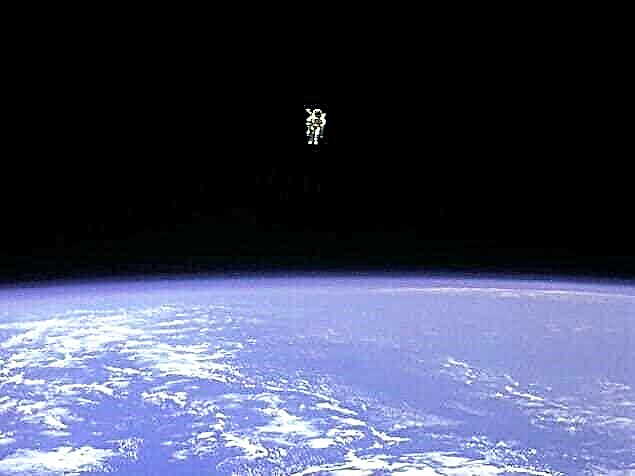
Throwing tongues of flame rocket engines put the spacecraft into orbit around the Earth. Other rockets take ships outside the solar system.
In any case, when we think about rockets, we imagine space flights. But rockets can fly in your room, for example, during your birthday celebrations.
Jet propulsion
An ordinary balloon can also be a rocket. How? Inflate the ball and tighten its neck so that the air does not come out. Now release the ball. He will begin to fly around the room completely unpredictably and uncontrollably, pushed by the force of air escaping from him.

Here is another simple rocket. We put on a railcar - a gun. Let's send her back. Suppose that friction between rails and wheels is very small and braking will be minimal. We shoot from the gun. At the time of the shot, the trolley will move forward. If you start frequent shooting, then the trolley will not stop, and with each shot it will gain speed. Flying from the cannon barrel back, shells push the trolley forward.
The force that is created is called recoil. It is this force that makes any rocket move, both in terrestrial conditions and in space. Whatever substances or objects fly out of a moving object, pushing it forward, we will have a sample of a rocket engine.

A rocket is much better suited for flying in a space void than in the Earth’s atmosphere.To launch a rocket into space, engineers have to design powerful rocket engines. They base their designs on the universal laws of the universe, discovered by the great English scientist Isaac Newton, who worked at the end of the 17th century. Newton's laws describe gravity and what happens to physical bodies as they move. The second and third laws help to clearly understand what a rocket is.
Interesting jet propulsion video
Rocket Movement and Newton's Laws
Newton’s second law relates the strength of a moving object to its mass and acceleration (a change in speed per unit time). Thus, to build a powerful rocket, it is necessary that its engine emit large masses of burnt fuel at high speed. Newton’s third law states that the force of action is equal to the force of reaction and is directed in the opposite direction. In the case of a rocket, the force of action is the hot gases escaping from the nozzle of the rocket, the counteraction force pushes the rocket forward.

The rockets that launch spacecraft into orbit use hot gases as a source of power. But the role of gases can be played by anything, that is, from solid bodies ejected into space from the stern to elementary particles - protons, electrons, photons.
How does a rocket fly?
Many people think that a rocket moves because the gases ejected from the nozzle are repelled from the air. But this is not so. It is the force that throws gas from the nozzle that pushes the rocket into space.Indeed, it is easier for a rocket to fly in outer space, where there is no air, and nothing restricts the flight of particles of gas ejected by the rocket, and the faster these particles propagate, the faster the rocket flies.
That is, there is no friction between the spacecraft and the air that could slow down the flight. There is no friction because there is no air in outer space. In addition, with a significant distance from the Earth, the ship becomes almost weightless. Therefore, even a slight thrust of the engine can easily move a very large ship from its place.












